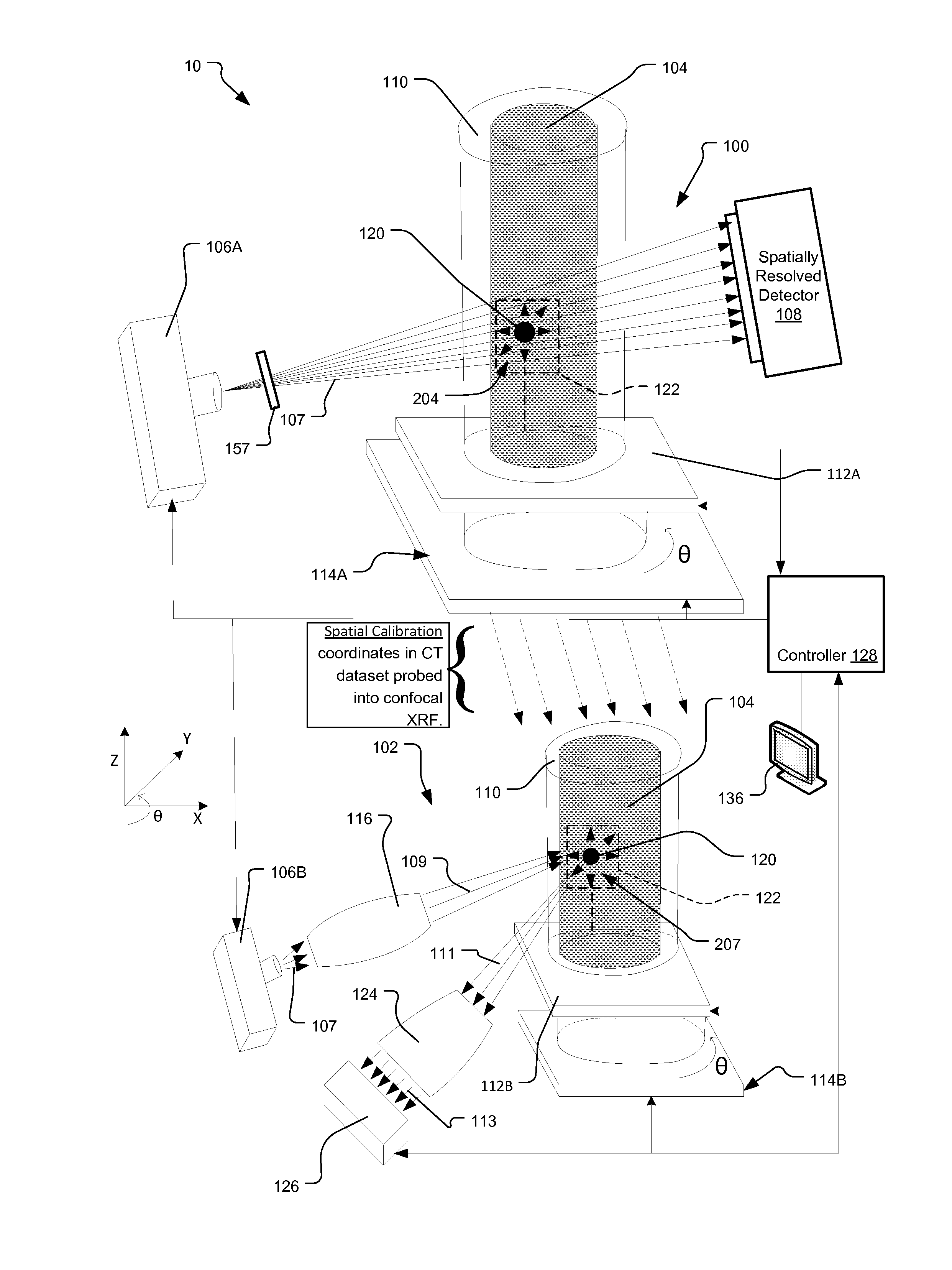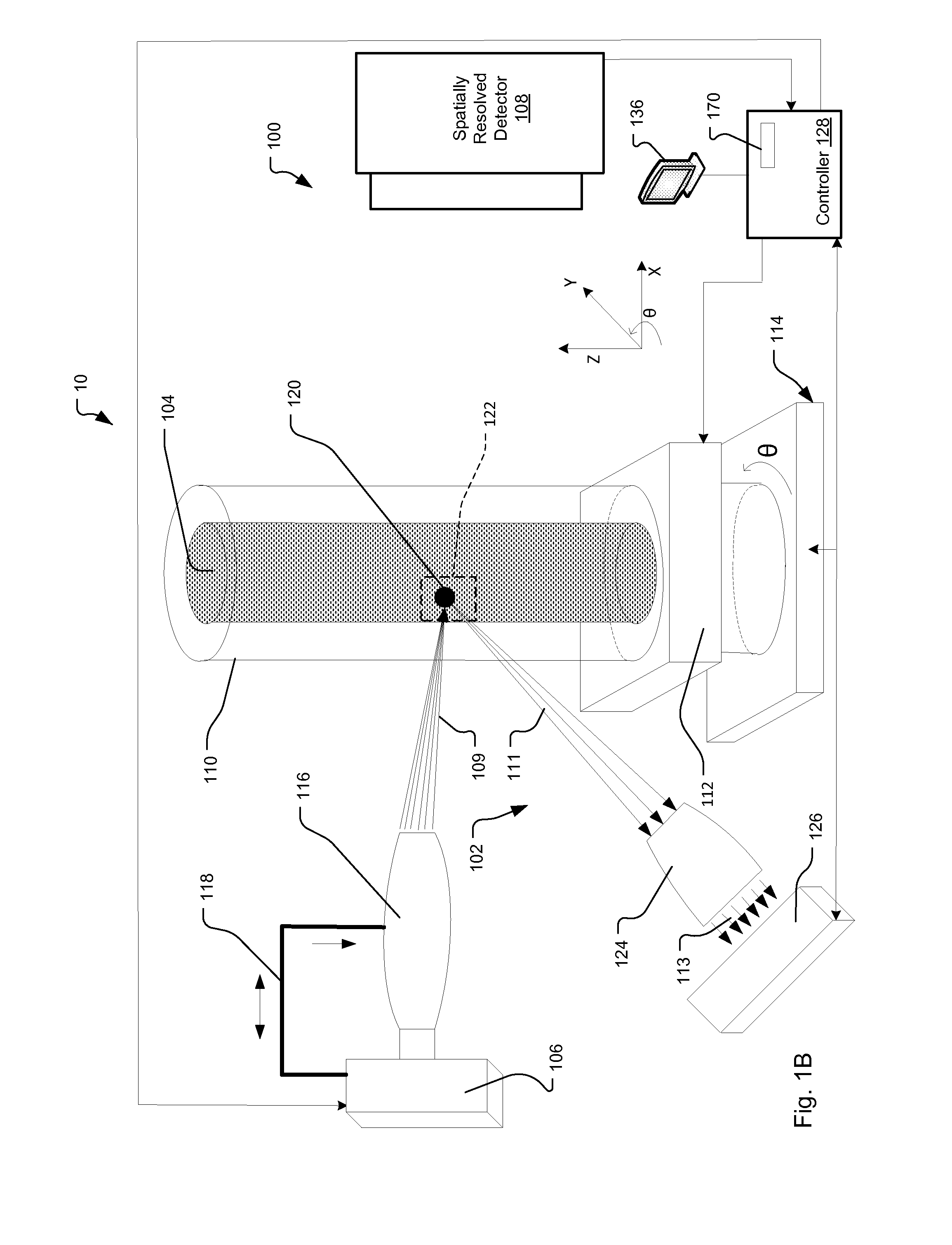Combined confocal x-ray fluorescence and x-ray computerised tomographic system and method
a computerised tomographic system and confocal x-ray technology, applied in material analysis using wave/particle radiation, instruments, nuclear engineering, etc., can solve the problems of destructive image of sample used for mla method, limited information obtained, and undetermined 3-d context of particle, etc., to achieve positive correlation and improve extraction yields
- Summary
- Abstract
- Description
- Claims
- Application Information
AI Technical Summary
Benefits of technology
Problems solved by technology
Method used
Image
Examples
Embodiment Construction
[0058]3-D images delivered by x-ray CT include a cubic array of voxels with “average” attenuation values. These values are represented by “grey levels”. The differences in grey levels, or voxel intensities, correspond to differences in attenuation and are representative of the material that caused this attenuation. A histogram of these grey level values allows one to analyze and determine the various materials and their phases present in the image, provided the grey levels are suitably calibrated. These grey levels are often sufficient for many applications such as IC failure analysis or porosity analysis for oil and gas rock analysis.
[0059]For tailings analysis in mining, ambiguities arise due to so-called grey-scale overlaps. These occur if materials with different elemental composition exhibit very similar or same grey levels in the x-ray CT data. For example, if a small high-density grain is found in a tailings sample, it is generally not possible to positively identify this gra...
PUM
| Property | Measurement | Unit |
|---|---|---|
| sizes | aaaaa | aaaaa |
| diameter | aaaaa | aaaaa |
| time | aaaaa | aaaaa |
Abstract
Description
Claims
Application Information
 Login to View More
Login to View More - R&D
- Intellectual Property
- Life Sciences
- Materials
- Tech Scout
- Unparalleled Data Quality
- Higher Quality Content
- 60% Fewer Hallucinations
Browse by: Latest US Patents, China's latest patents, Technical Efficacy Thesaurus, Application Domain, Technology Topic, Popular Technical Reports.
© 2025 PatSnap. All rights reserved.Legal|Privacy policy|Modern Slavery Act Transparency Statement|Sitemap|About US| Contact US: help@patsnap.com



